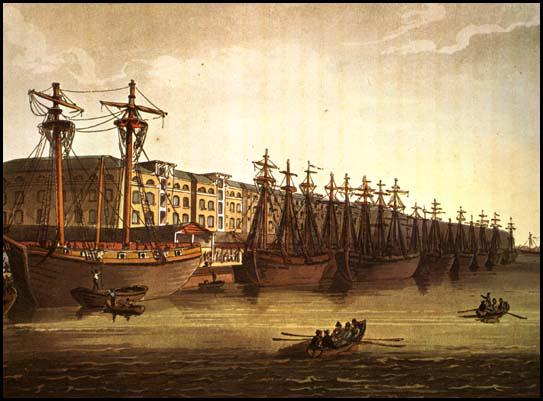West India Docks
London had been a major port since the arrival of the Romans but by the 18th century it was unable to cope with the rapidly increasing traffic. Between 1720 and 1800 trade tripled and there were times when 1,800 vessels were competing for 500 mooring spaces. West India Docks was authorized by Parliament in 1800 and took two years to complete. Built by William Jessop and John Rennie, the dock is situated on the Isle of Dogs, a peninsula in the East End of London. Other docks soon followed including London Docks at Wapping (1805), East India Docks at Blackwell (1806) and Surrey Docks at Rotherhithe (1807).

Primary Sources
(1) William Pyne, The Microcosm of London (1808)
There is a range of spacious warehouses around the docks, for storing the West India produce, each of which is capable of containing eighty thousand hogsheads of sugar. All the West India ships must load and unload here. The loading and unloading is accomplished with the greatest ease and expedition. The cranes are of iron and constructed on a new principle: they occupy a very small space; and a single man, by the aid of one of them, moves one ton weight in and out of a ship, without any difficulty.
